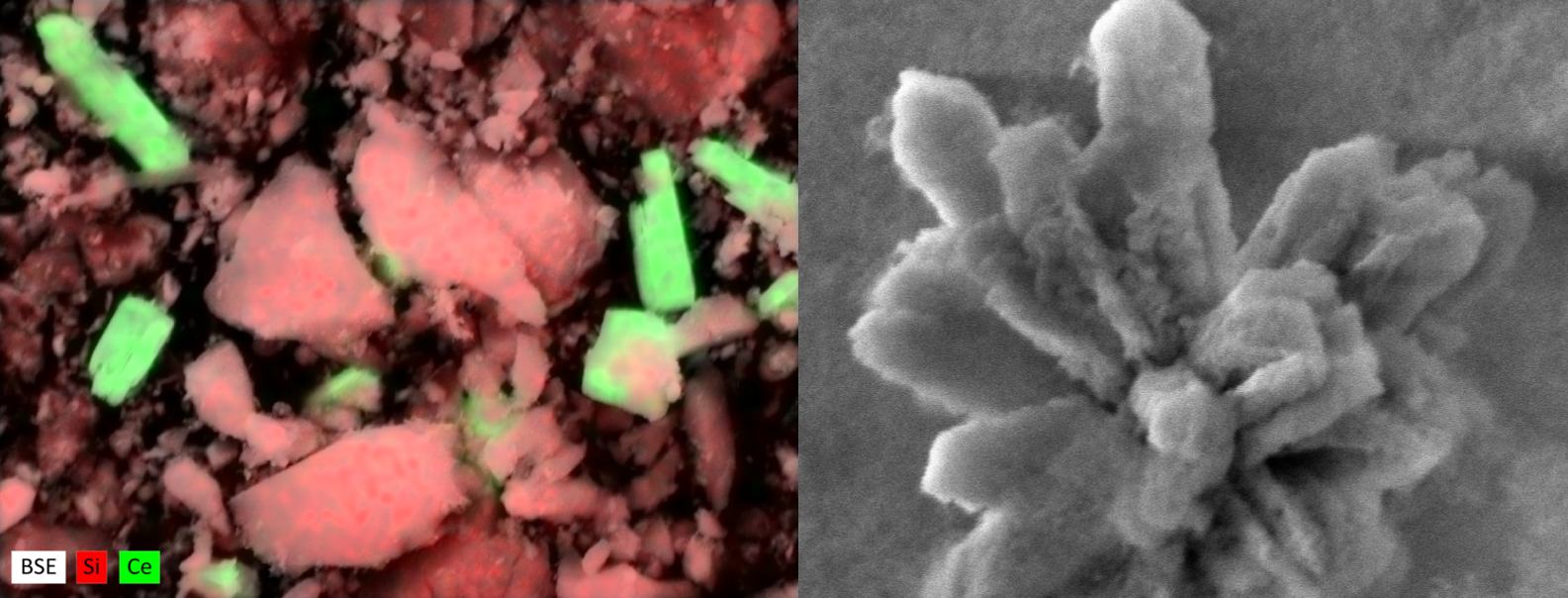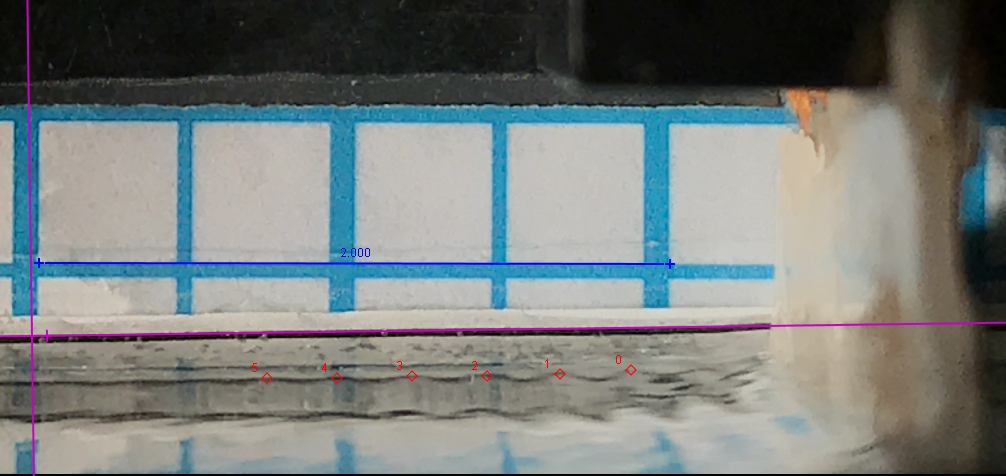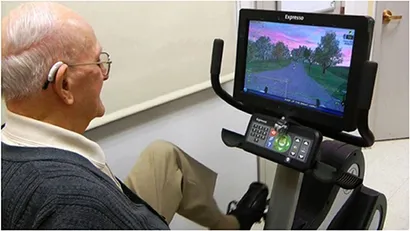My research projects
Graduate research
Laser cooling
Principal investigator: Professor Lan Cheng
 Physicists can use lasers to cool down atoms and molecules to near
absolute zero, which makes them easier to study. Compared to atoms
and diatomic molecules, polyatomic molecules are much more difficult
to cool because of their additional vibrational degrees of freedom.
But polyatomic molecules are a promising option for precision
measurement, and it has been proposed that they could play a vital
role in the search for physics beyond the Standard Model. For this
project, I am constructing potential energy surface fits that will
help us understand how exactly to perform laser cooling for
polyatomic molecules.
Physicists can use lasers to cool down atoms and molecules to near
absolute zero, which makes them easier to study. Compared to atoms
and diatomic molecules, polyatomic molecules are much more difficult
to cool because of their additional vibrational degrees of freedom.
But polyatomic molecules are a promising option for precision
measurement, and it has been proposed that they could play a vital
role in the search for physics beyond the Standard Model. For this
project, I am constructing potential energy surface fits that will
help us understand how exactly to perform laser cooling for
polyatomic molecules.
Light-induced conical intersections
Principal investigator: Professor David R. Yarkony (deceased)
 A conical intersection is a geometric structure where two electronic
states of a molecule have the same energy. They are important in
photochemistry because they allow molecules to quickly lose
electronic energy, and they are known to play a vital role in human
vision, DNA photoprotection, and photosynthesis. Recently, quantum
chemists have become interested in using lasers to manipulate
conical intersections. In 1995, it
was said
that "Ever since the development of the laser, the quest to use
light to control the future of matter has been one of the Holy
Grails of chemistry". Light–matter interactions can give rise to
light-induced conical intersections (LICIs) by reshaping the
potential energy surfaces. For this project, I studied how LICIs
affect the photodissociation of ammonia. A Floquet Hamiltonian was
used to implement the light interaction, and quantum chemical data
was provided by diabatic potential energy, nonadiabatic coupling,
dipole, and spin–orbit coupling matrix surfaces fitted using neural
networks.
A conical intersection is a geometric structure where two electronic
states of a molecule have the same energy. They are important in
photochemistry because they allow molecules to quickly lose
electronic energy, and they are known to play a vital role in human
vision, DNA photoprotection, and photosynthesis. Recently, quantum
chemists have become interested in using lasers to manipulate
conical intersections. In 1995, it
was said
that "Ever since the development of the laser, the quest to use
light to control the future of matter has been one of the Holy
Grails of chemistry". Light–matter interactions can give rise to
light-induced conical intersections (LICIs) by reshaping the
potential energy surfaces. For this project, I studied how LICIs
affect the photodissociation of ammonia. A Floquet Hamiltonian was
used to implement the light interaction, and quantum chemical data
was provided by diabatic potential energy, nonadiabatic coupling,
dipole, and spin–orbit coupling matrix surfaces fitted using neural
networks.
Published in
The Journal of Chemical Physics
Presented at the
29th Dynamics of Molecular Collisions Conference
Published in
The Journal of Physical Chemistry Letters
Presented at the
2024 Molecular Interactions and Dynamics Gordon Research
Conference
Photoelectron spectroscopy simulation
Principal investigator: Professor David R. Yarkony (deceased)
 Anion ultraviolet photoelectron spectroscopy is a helpful tool that
can provide a great deal of insight into the vibrational behavior of
molecules. Usually, it is relatively easy to simulate a molecule's
spectrum: just calculate the Franck–Condon overlap integrals. But
this all falls apart for tetrazolyl (and other azolyls) because its
lowest electronic states cross (a conical intersection). More
advanced techniques are needed that treat the interactions between
electronic states. For this project, I used a potential energy
matrix model to simulate the photoelectron spectrum of tetrazolyl.
This molecule's complex and difficult-to-calculate electronic
structure necessitated the use of a fourth-order fit, whereas other
azolyls were previously studied using only second-order parameters
without issue.
Anion ultraviolet photoelectron spectroscopy is a helpful tool that
can provide a great deal of insight into the vibrational behavior of
molecules. Usually, it is relatively easy to simulate a molecule's
spectrum: just calculate the Franck–Condon overlap integrals. But
this all falls apart for tetrazolyl (and other azolyls) because its
lowest electronic states cross (a conical intersection). More
advanced techniques are needed that treat the interactions between
electronic states. For this project, I used a potential energy
matrix model to simulate the photoelectron spectrum of tetrazolyl.
This molecule's complex and difficult-to-calculate electronic
structure necessitated the use of a fourth-order fit, whereas other
azolyls were previously studied using only second-order parameters
without issue.
Published in
The Journal of Chemical Physics
Presented at the
28th Dynamics of Molecular Collisions Conference
Undergraduate research
Microscopy, elemental mapping, and calorimetry of metal-infused aerogels
Advisor: Professor Mary K. Carroll (2024 ACS president)
 Automotive catalytic converters contain platinum-group metals, but
mining them is environmentally destructive. Metal-containing
aerogels are a promising alternative thanks to their unique
properties including high specific surface area and heat resistance.
I synthesized metal-infused aerogels using a hydraulic hot press
with a patented rapid supercritical extraction method. I
characterized their nanostructure with scanning electron microscopy
(SEM), energy-dispersive X-ray spectroscopy (EDS), powder X-ray
diffraction (XRD), atomic force microscopy (AFM), and differential
scanning calorimetry (DSC), all of which I operated myself. With
conventional protocols, SEM is nearly impossible on aerogels because
they are so insulating, and AFM is difficult because aerogels are so
soft. I developed and implemented novel sample preparation
techniques that enabled nanometer-resolution microscopy of these
tricky materials.
Automotive catalytic converters contain platinum-group metals, but
mining them is environmentally destructive. Metal-containing
aerogels are a promising alternative thanks to their unique
properties including high specific surface area and heat resistance.
I synthesized metal-infused aerogels using a hydraulic hot press
with a patented rapid supercritical extraction method. I
characterized their nanostructure with scanning electron microscopy
(SEM), energy-dispersive X-ray spectroscopy (EDS), powder X-ray
diffraction (XRD), atomic force microscopy (AFM), and differential
scanning calorimetry (DSC), all of which I operated myself. With
conventional protocols, SEM is nearly impossible on aerogels because
they are so insulating, and AFM is difficult because aerogels are so
soft. I developed and implemented novel sample preparation
techniques that enabled nanometer-resolution microscopy of these
tricky materials.
Published in the
Journal of Sol-Gel Science and Technology
Published in the
Journal of Sol-Gel Science and Technology
Presented at the 31st Steinmetz Symposium
▶ Video
Presented at the
ACS Spring 2021 National Meeting
Published in
Emission Control Science and Technology
Presented at the
30th Steinmetz Symposium
Published in the
Journal of Sol-Gel Science and Technology
Presented at the 2019 New York Six Undergraduate Research
Conference
Presented at the 2019 ACS Northeast Regional Meeting
Presented at the
29th Steinmetz Symposium
Acknowledged in a publication in The
Journal of Visualized Experiments
Acknowledged in a publication in
The Journal of Supercritical Fluids
Liquid-liquid interfacial assembly of peptoid nanosheets
Advisor: Professor Ellen Robertson
 Gold nanoparticles exhibit localized surface plasmon resonance
(LSPR), which changes their color depending on their environment and
how close they are to each other. This is promising for sensing
applications, including the detection of environmental toxins. I
synthesized peptoid monolayer sheets containing gold nanoparticles
and used UV–Vis spectroscopy to assess LSPR activity.
Gold nanoparticles exhibit localized surface plasmon resonance
(LSPR), which changes their color depending on their environment and
how close they are to each other. This is promising for sensing
applications, including the detection of environmental toxins. I
synthesized peptoid monolayer sheets containing gold nanoparticles
and used UV–Vis spectroscopy to assess LSPR activity.
Presented at the
ACS Spring 2022 National Meeting
Published in
Chemical Communications
Presented at the
30th Steinmetz Symposium
Presented at the
259th ACS National Meeting
Calculating surface tension with capillary waves
Advisor: Professor Jef Wagner
 I constructed an experimental apparatus to measure the surface
tension coefficient of liquids. A wave-generating motor produced
capillary waves on the surface of the sample liquid. To make the
measurement, image tracking software was used to examine the
dispersion relationship of the generated waves. Unlike some other
experimental setups, ours can work on any fluid regardless of
polarity.
I constructed an experimental apparatus to measure the surface
tension coefficient of liquids. A wave-generating motor produced
capillary waves on the surface of the sample liquid. To make the
measurement, image tracking software was used to examine the
dispersion relationship of the generated waves. Unlike some other
experimental setups, ours can work on any fluid regardless of
polarity.
Presented at the
29th Steinmetz Symposium
 Interactive Physical and Cognitive Exercise System
Interactive Physical and Cognitive Exercise System
Advisor: Professor Cay Anderson-Hanley
 I contributed to a neuropsychological study on the effect of
exercise combined with puzzle games (neuro-exergaming) on cognitive
health and wellness, including for patients coping with Alzheimer's
and other challenges.
I contributed to a neuropsychological study on the effect of
exercise combined with puzzle games (neuro-exergaming) on cognitive
health and wellness, including for patients coping with Alzheimer's
and other challenges.
Acknowledged in a publication in
Frontiers in Aging Neuroscience
Acknowledged in a publication in
Clinical Interventions in Aging